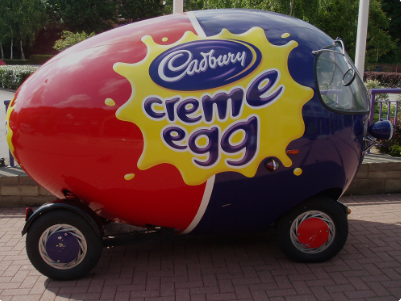Welcome to the thrilling world of the Egg Car Challenge! Are you ready to put your engineering skills to the test and see if you can design a car that will safely transport an egg without cracking? Get ready for a fun and educational adventure as we explore how to ensure your egg car doesn’t crack. Let’s dive in and get cracking (pun intended)!
Materials Needed for Building an Egg Car
Are you ready to take on the challenge of building an egg car that will keep your fragile passenger safe and sound? To get started, gather your materials. You’ll need items like cardboard, tape, straws, rubber bands, cotton balls, and of course, a raw egg.
Cardboard will serve as the base of your egg car, providing structure and support. Tape is essential for securing all the components together. Straws can be used as axles for the wheels to rotate smoothly. Rubber bands can act as shock absorbers to cushion any impact.
Don’t forget about incorporating soft materials like cotton balls inside the car to create a protective barrier around the egg. These materials are crucial in ensuring that your egg remains intact during testing.
Once you have everything you need, it’s time to unleash your creativity and start designing a sturdy and innovative egg car that will withstand various challenges ahead!
Tips for Designing a Strong and Durable Egg Car
When it comes to designing your egg car, focusing on strength and durability is key. Start by selecting sturdy materials that can withstand impact. Consider using materials like foam board, popsicle sticks, or even small plastic containers to create a solid structure for your egg car.
Think about the shape of your design – curved edges are better at absorbing shock compared to sharp corners. Additionally, reinforcing weak spots with extra layers of material can help prevent cracks during testing.
Don’t forget about the wheels! Make sure they are securely attached and able to roll smoothly. A stable base with well-aligned wheels will help ensure a successful run for your egg car.
Experiment with different designs and test them out before finalizing your construction. Sometimes a slight adjustment can make all the difference in protecting your precious cargo during the big drop test.
The Importance of Proper Placement and Cushioning for the Egg
When it comes to the Egg Car Challenge, proper placement and cushioning for the egg are crucial factors in ensuring its safety during testing.
Consider the position of the egg within your car design. Placing it in the center can help distribute impact forces more evenly, reducing the risk of cracking.
Next, think about how you can cushion the egg effectively. Materials like cotton balls, foam padding, or even bubble wrap can provide a protective barrier around the egg to absorb shocks.
Remember that too much cushioning may add unnecessary weight to your car, affecting its speed and performance during testing. Finding a balance is key.
Experiment with different placement and cushioning techniques to see what works best for your Egg Car design. Testing and iterating will help you fine-tune these important aspects for success in the challenge!
Testing and Troubleshooting Your Egg Car
Once you’ve built your eggs car, it’s time to put it to the test. Gently place your egg inside and secure it in its designated spot within the vehicle. Ensure all components are stable and well-constructed before proceeding.
Give your egg car a trial run on different surfaces to see how it holds up. Try smooth floors, bumpy roads, or even a makeshift ramp for added challenge. Pay close attention to any weak spots or potential areas of improvement.
If your eggs car cracks during testing, don’t get discouraged! Use this as an opportunity to troubleshoot and reinforce weak points. Consider adjusting the design, adding extra cushioning, or reinforcing key areas with additional materials.
Keep experimenting and refining your until it can withstand various tests without cracking. Remember, failure is just another step towards success in mastering the art of building a durable and reliable eggs car!
Creative Ideas for Decorating Your Egg Car
Now, let’s talk about the fun part – decorating your egg cars! Get creative and think outside the box. Consider using colorful paints, stickers, or even small decals to give your egg car a unique look. You can also add embellishments like glitter or rhinestones for some extra flair.
Experiment with different themes like superheroes, animals, or futuristic designs. Let your imagination run wild and make your egg cars stand out from the rest. Don’t be afraid to mix and match materials to create a one-of-a-kind masterpiece.
If you’re feeling crafty, try incorporating recycled materials like bottle caps or popsicle sticks into your design. Not only will this add an eco-friendly touch to your project, but it will also showcase your ingenuity.
Remember, decorating your is all about expressing yourself and having fun in the process. So grab those art supplies and get ready to turn your ordinary into a work of art!
Have Fun and Learn with the Egg Car Challenge!
Building an eggs car is not just a fun activity, but also a great opportunity to learn about physics, engineering, and problem-solving. By following the tips provided in this article for designing a strong and durable eg car, ensuring proper placement and cushioning for the eg, testing and troubleshooting your creation, as well as getting creative with decorations, you can make sure that your eggs car doesn’t crack.
So grab some materials, gather your friends or family members, and embark on this exciting challenge together. Whether you are a student looking to enhance your STEM skills or simply someone who enjoys hands-on projects, the egg car challenge is a fantastic way to engage both young and old minds alike. Remember to have fun throughout the process and celebrate your successes – no matter how many trial runs it takes!
